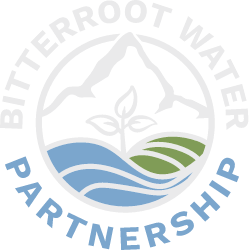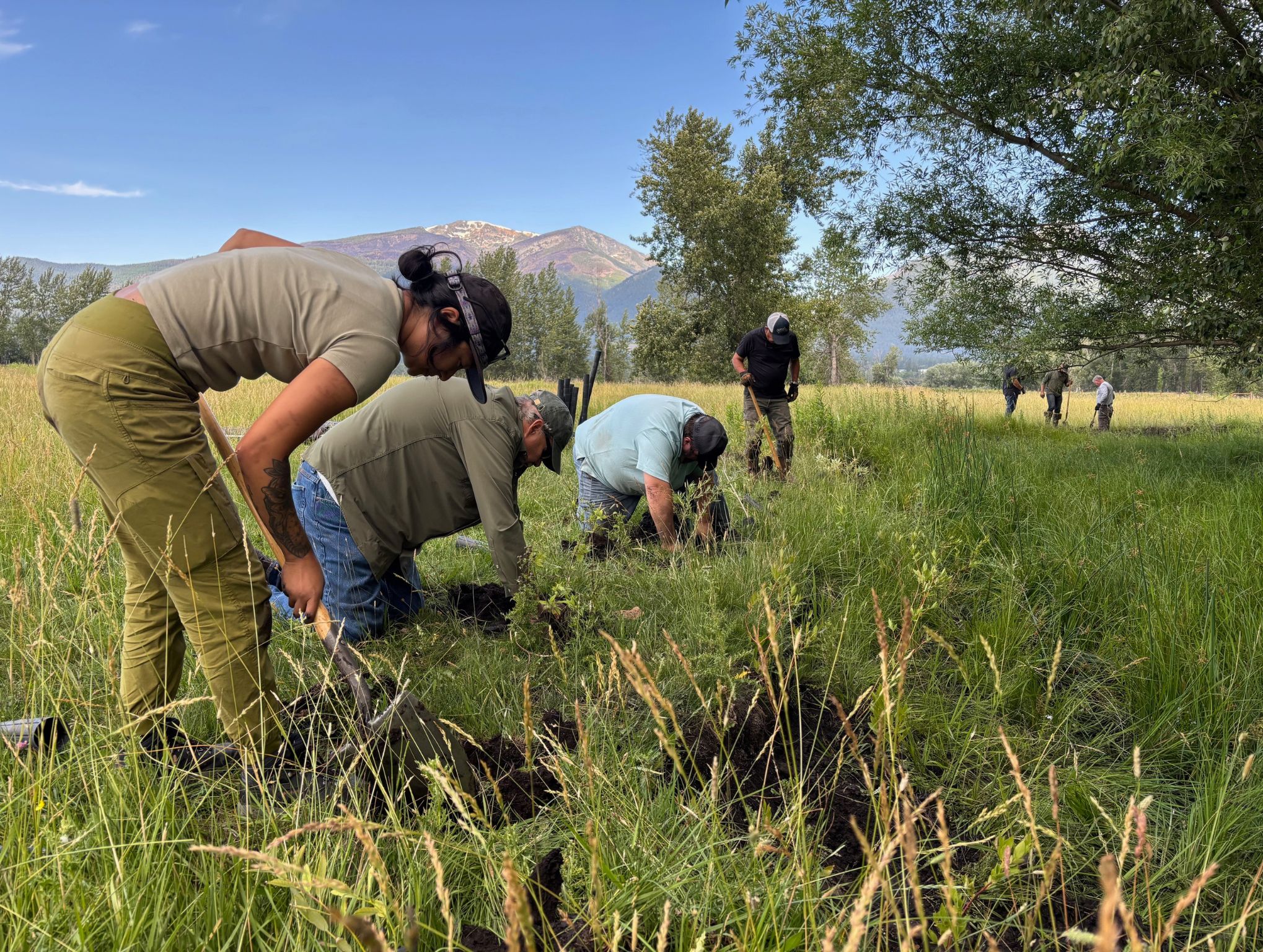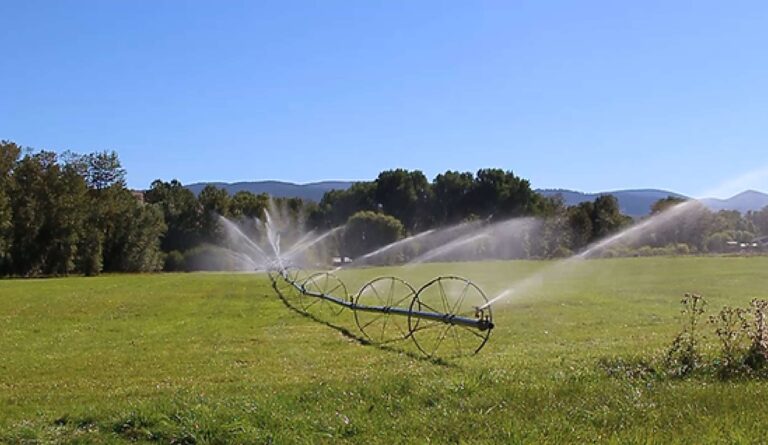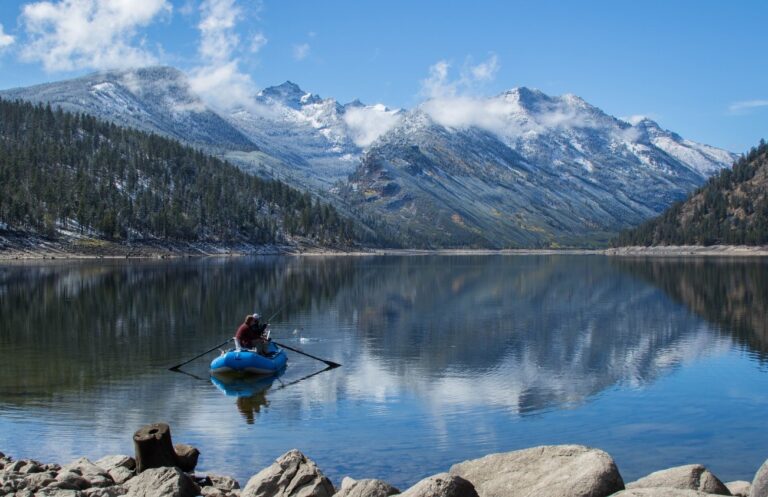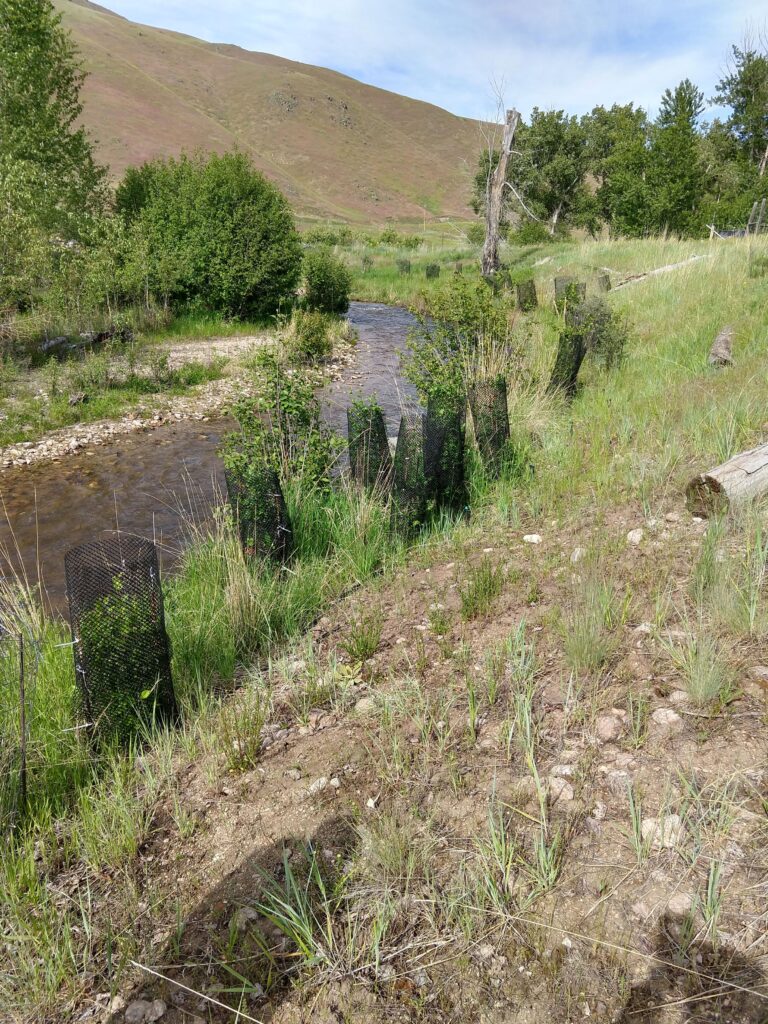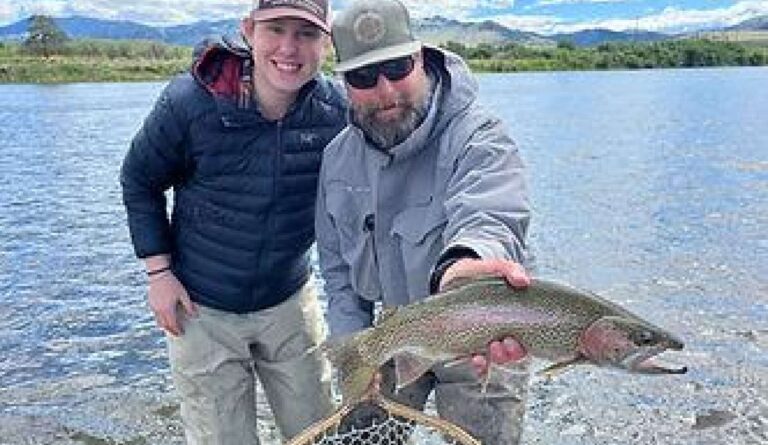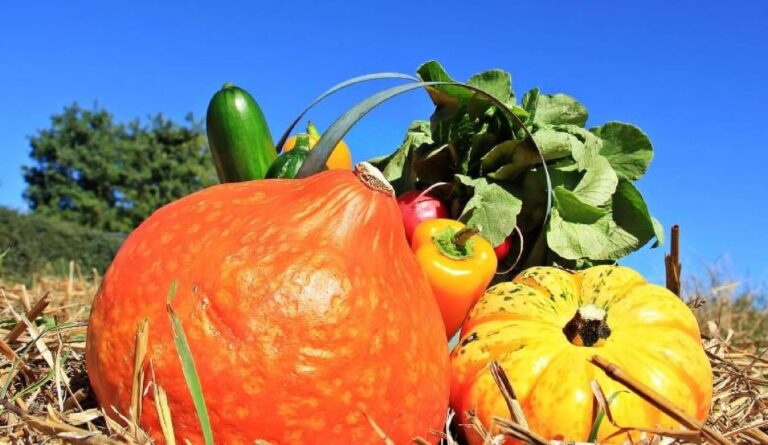From Muddy to Mighty – Restoring North Burnt Fork one Section at a Time
North Burnt Fork Creek (NBF) is a beautiful Stevensville creek that flows into the Bitterroot River, and one of the largest tributaries on the east side. The creek originates in the Sapphire Mountains and winds through the Lee Metcalf National Wildlife Refuge. NBF serves as a critical migratory corridor for fish, birds, and other wildlife and was historically a major spawning tributary for Bull Trout and Cutthroat Trout.
Today, NBF suffers from nutrient (Nitrogen and Phosphorus) and sediment pollution, warming water temperature, and loss of wildlife habitat. More than 90% of the creek is in poor condition, and working lands, wildlife, and recreation suffers because of it. That’s why the Bitterroot Water Partnership (BWP) coordinates with landowners and partners to lead a series of restoration projects to revitalize North Burnt Fork Creek – restoring its habitat, improving water quality, and ensuring a resilient future for the river, wildlife, and surrounding working lands.
Since 2019, we’ve collaborated with four separate landowners to carry out restoration on their property. Together, those projects restore 1/2 mile of the stream. This cross-landscape restoration emphasizes the accumulation of positive conservation outcomes, and that each streamside landowner can positively contribute to water conservation in the Bitterroot.
Here’s a glance at some of those projects…. more coming soon!
Restoration at the Meyer Ranch: Project 1 of 3
In Partnership with the Meyer Family, the Bitterroot Water Partnership restored 1,000 feet (~3 football fields) of the North Burnt Fork. Volunteers planted 140 plants and 300 willow cuttings, and helped install protective fencing around the stream. Two guided cattle crossings (picture below) allow livestock to pass through the stream to reach key grazing areas while leaving the rest of fragile stream habitat fenced and protected. The off-stream watering system we installed gives cattle a watering hole away from the stream, ensuring they don’t trample habitat and banks.
Thanks to the help of volunteers, we also planted 61 seedlings, 300 willow cuttings, and 70 nursery plants to help stabilize the streambank and restore wildlife habitat.
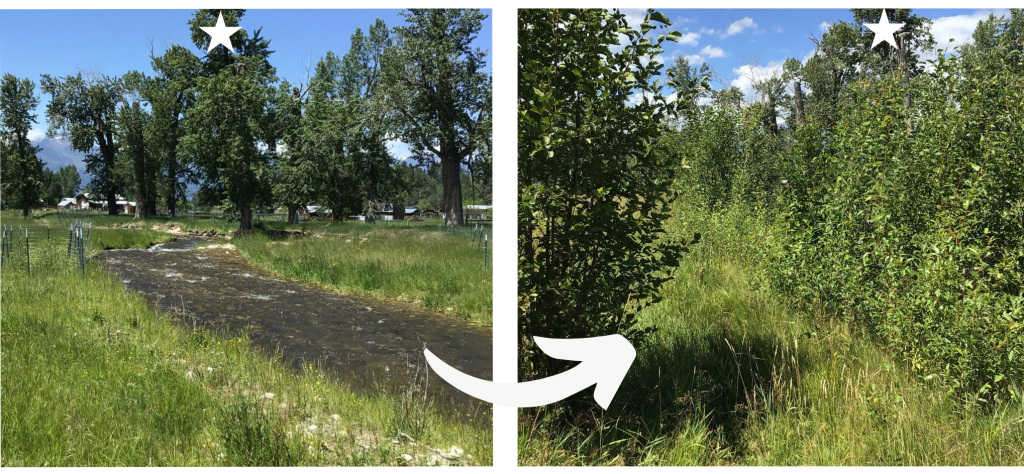
In just four years, this barren streamside was transformed into a lush, healthy streamside habitat. The stream is no longer widening across the land, its shaded from the hot sun, and cattle can still access the land and water they need.
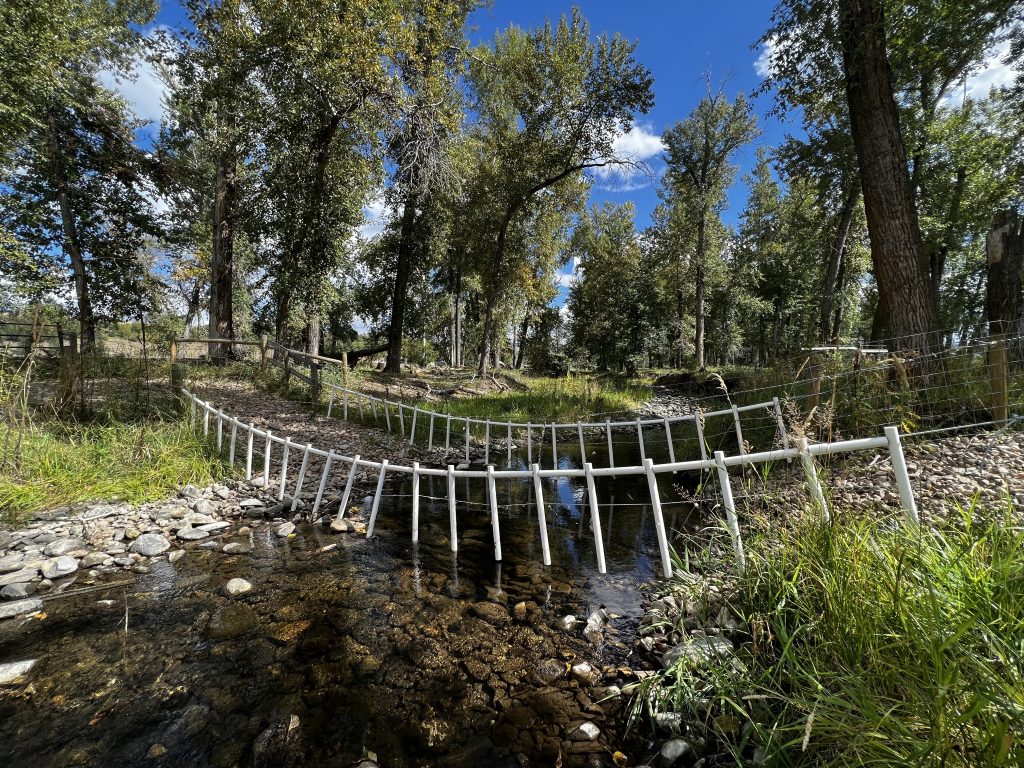
Guided Cattle Crossing
Wild Fowl Lane Private Property Restoration: Project 2 of 3
In 2025, BWP will partner with this Burnt Fork property owner, The New Frontier Ministries, to restore the southern section of North Burnt Fork. In it’s current degraded state, it is completely barren (see pictures), allowing the stream to widen over time, all the while exposed to hot sun. Lack of streamside habitat means mud is washing from the eroding banks into the water.
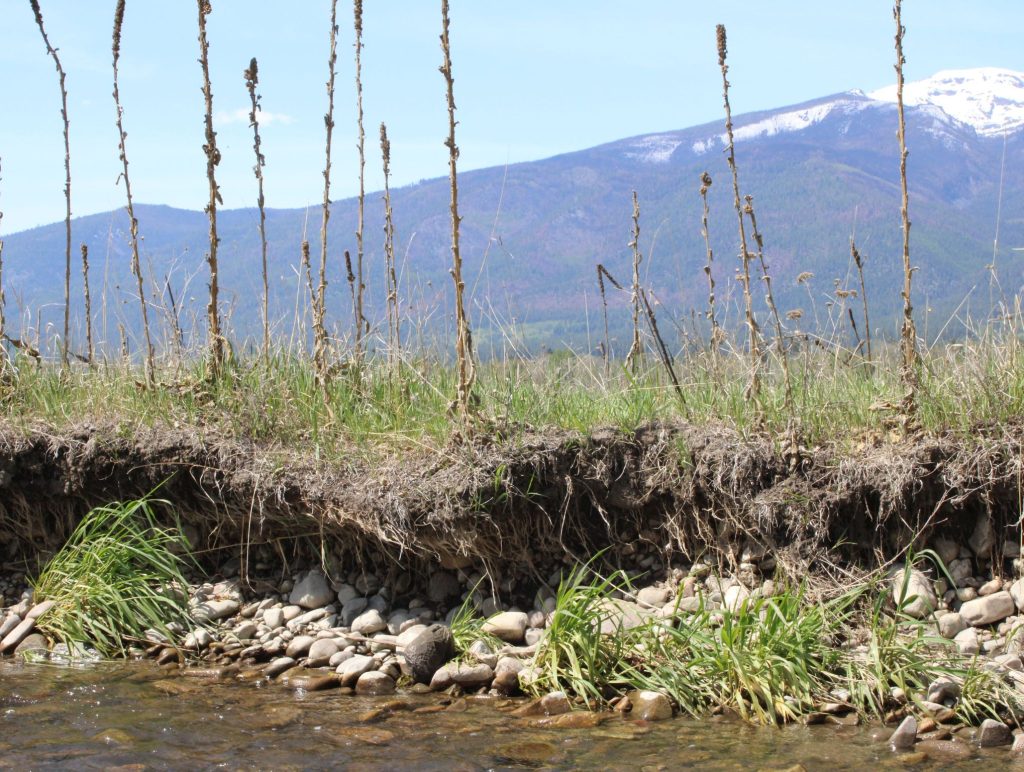
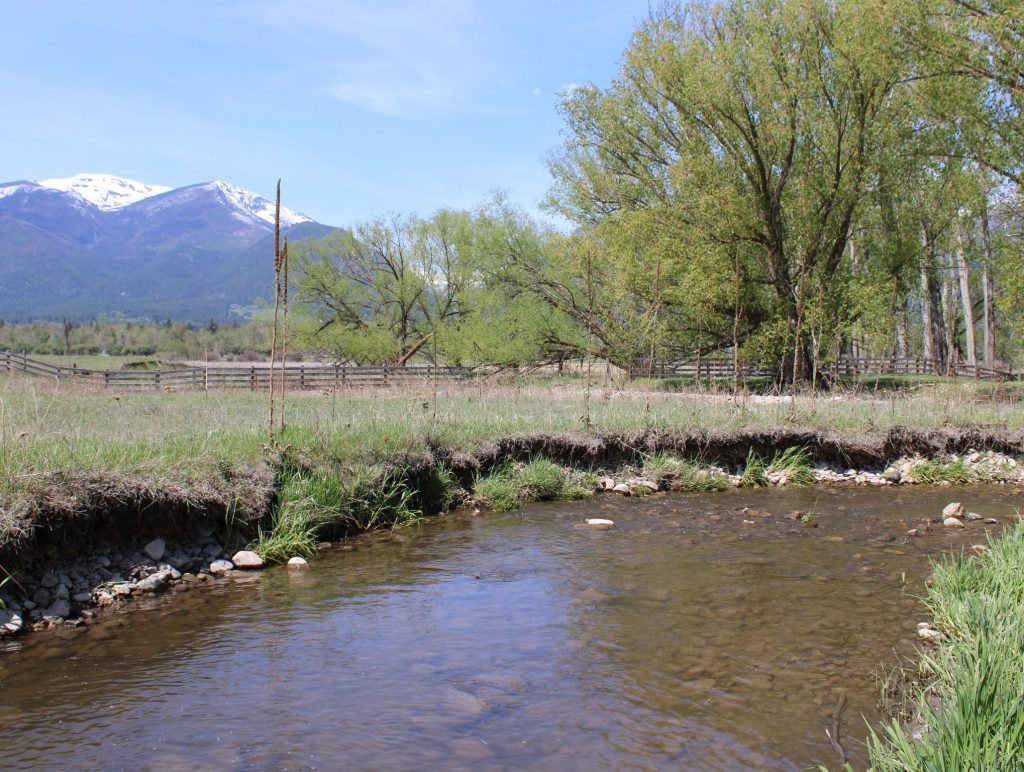
In a few years time, this naked streamside will house thriving streamside habitat. With volunteer support, we’ll replant 5,400 square feet of streamside (slightly larger than a basketball court) with 300 native plants and ~1,500 willow cuttings.
New Frontier Ministries utilizes outdoor recreation such as fishing and hiking to mentor father-son relationships, so habitat restoration on their property will fulfill their mission and ours, too.
Johnson Ranch Streamside & Wetland Restoration: Project 3 of 3
Some restoration projects take years to plan and implement. With willing landowners and a committed team of enthusiastic, on-call volunteers, some can be put together in a matter of months. This crew planting 90 willows along 450 feet (just over a football field) of North Burnt Fork Creek includes a board member, volunteers, an AmeriCorps member, staff, and even a family member visiting from Florida.
Native willows and other plants can help hold water in the soil longer, improving plant growth over time and reducing irrigation needs. This vegetation can now filter water, absorbing nutrient pollution before it flows downstream. Finally, a shaded stream can help maintain cooler water temperatures for native fish like Bull trout and Westslope Cutthroat trout.
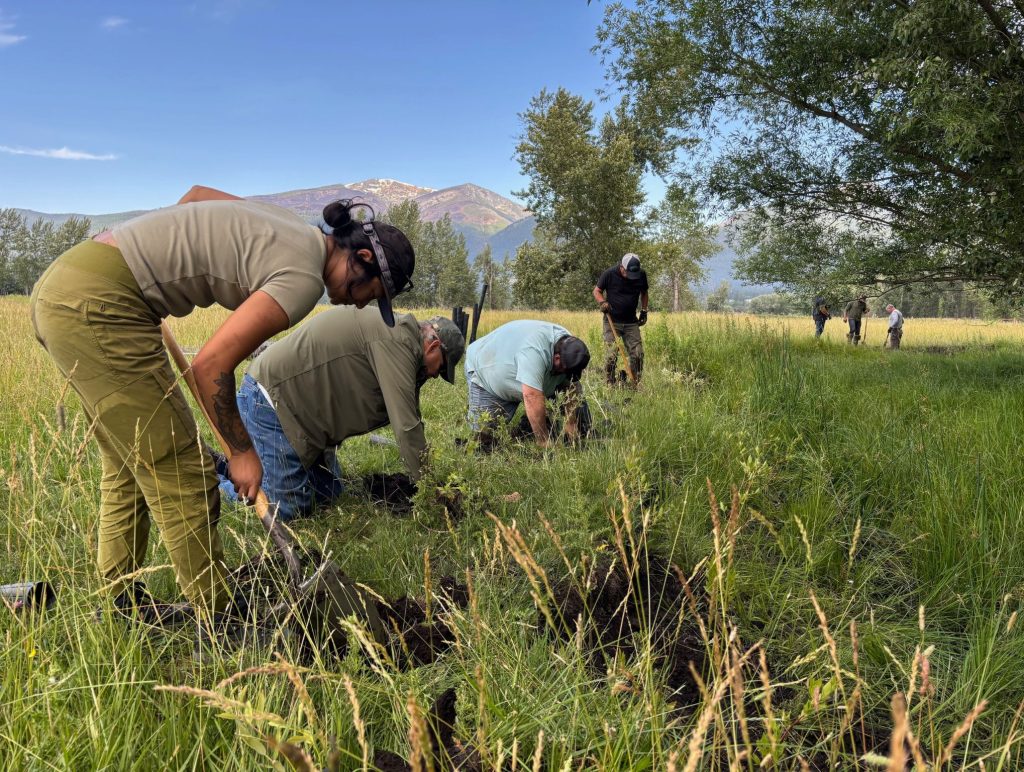
Restoration Impact Extension: Trout Unlimited leads North Burnt Fork Creek Restoration on Lee Metcalf National Wildlife Refuge
Building on these improvements to North Burnt Fork, our friends at Trout Unlimited re-established year-round fish passage from NBF to the Bitterroot River, through Lee Metcalf Wildlife Refuge, to allow migratory fish to move freely. The project team removed a barrier blocking fish passage, removed invasive plants, and restored native streamside vegetation.
Continuing Conservation Impacts for North Burnt Fork Creek
The North Burnt Fork is too critical of a water and habitat source to leave it in a degraded state. The Bitterroot Water Partnership is proud to lead growing restoration efforts for this creek with landowners, and quick to recognize just how much work is yet for us to be done. No single landowner, conservation organization, or agency can complete the work alone.
We’re eager to see how continued collaboration along the Creek can return it to a healthy state, one that nearby landowners, River recreationists, and the Bitterroot Valley can continue to rely on for perpetuity.
Read more about our restoration projects here.
